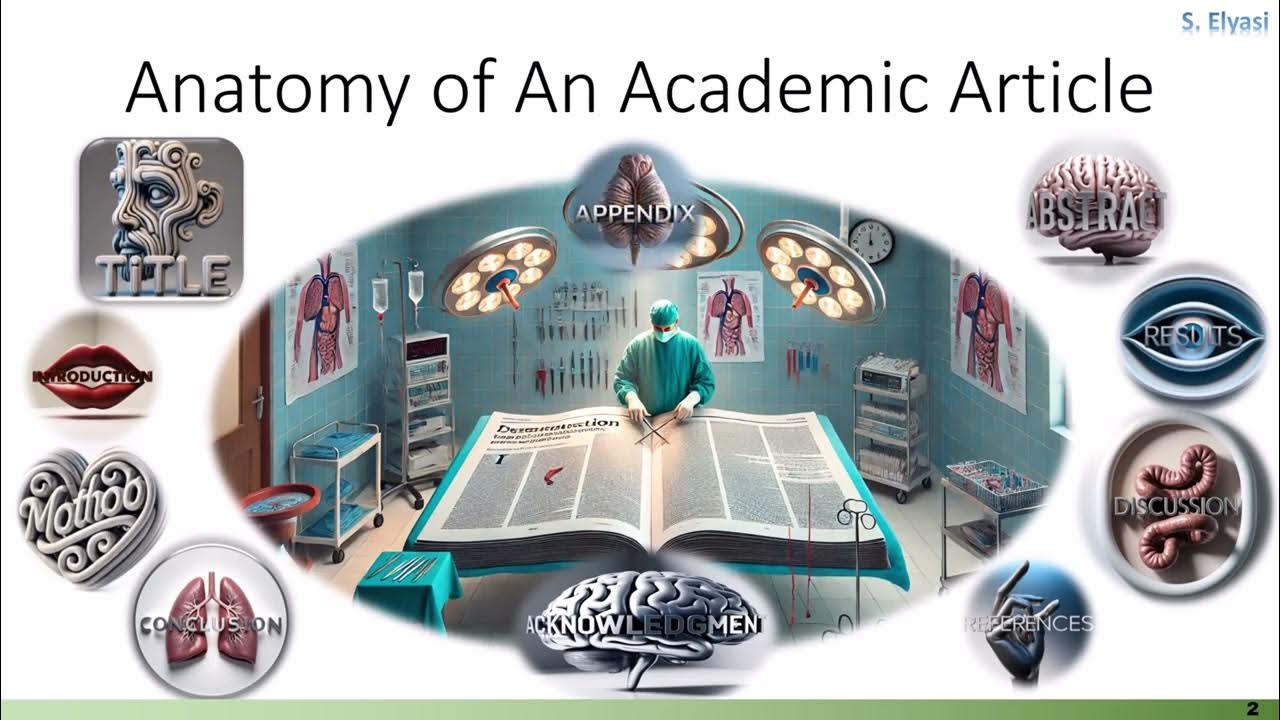INTRODUCTION PART 2
Summary
TLDRThis video script provides a detailed guide on writing an effective research paper introduction. It covers five essential components: presenting the current state of the field, defining the research problem, reviewing current practices and methods, identifying research gaps, and explaining the contribution of the study. The guide emphasizes the importance of clearly explaining the problem, acknowledging existing methods' strengths and weaknesses, and justifying the need for further research. The final step is to highlight how the study fills the research gap, contributing new insights and advancing the field.
Takeaways
- 😀 Start the introduction by providing background information on the current state of the field.
- 😀 Identify the research problem by discussing the specific issues or concerns within the field that need to be addressed.
- 😀 Explain the significance of the research problem, emphasizing why it is important to study.
- 😀 Provide context and background for the research problem, describing affected groups, statistics, or relevant events.
- 😀 Review current practices or methods being used in the field to address the research problem, highlighting both strengths and weaknesses.
- 😀 Offer a balanced perspective on existing methods, discussing their effectiveness, advantages, and limitations.
- 😀 Clearly identify gaps in the current research or practices, showing where existing methods fall short.
- 😀 Discuss why these gaps in research are important to explore, making the case for further study.
- 😀 Emphasize the contribution of your study in addressing the research gap, highlighting what new information, methods, or perspectives your research will provide.
- 😀 Conclude the introduction by summarizing how your research will advance the field and fill the identified research gap.
Q & A
What is the first step in writing the introduction of a research paper?
-The first step is to present the current state of the field. This can be done by providing relevant background information, recent developments, or statistical data that set the context for your research.
What should you do after presenting the current state of the field?
-After presenting the current state of the field, you should introduce the research problem. This involves explaining the issues or concerns within the field that your study aims to address.
How do you identify the research problem in your study?
-To identify the research problem, you need to ask yourself what specific challenges or gaps exist in the field. Consider what is missing in the current body of knowledge or what concerns are not fully addressed.
Why is it important to explain the research problem in the introduction?
-Explaining the research problem is crucial because it helps readers understand the significance of your study. It also contextualizes the problem, showing why it is important to address and why further research is needed.
What comes after discussing the research problem?
-After discussing the research problem, you should present current practices or methods that are being used in the field to address the problem. This includes explaining how researchers or professionals are attempting to solve the issue.
What should you focus on when reviewing current practices and methods?
-When reviewing current practices and methods, you should describe each one in detail, explaining how it works, its strengths, and its limitations. This helps set the stage for demonstrating why further research is necessary.
How should you present the strengths and weaknesses of current methods?
-You should highlight the advantages of each method, such as efficiency or accuracy, but also be honest about their weaknesses. Discuss situations where the method is ineffective or where issues remain unsolved despite its use.
What is a research gap and why is it important?
-A research gap refers to areas where existing studies or methods have not provided sufficient answers or insights. Identifying this gap is important because it justifies the need for your research to fill the missing pieces in the field.
How do you demonstrate the need for your research?
-To demonstrate the need for your research, you must explain how existing methods or studies are limited. This could involve discussing incomplete results, areas that have not been explored, or gaps in knowledge that your research aims to address.
What is the final component to include in the introduction?
-The final component is explaining the contribution of your study. This involves showing how your research will address the identified research gap, provide new insights, or offer new methods or perspectives that will advance the field.
Why is it important to highlight the contribution of your study in the introduction?
-Highlighting the contribution of your study is important because it demonstrates the value and significance of your research. It helps readers understand why your work is essential and how it will contribute to advancing the field.
Outlines

Esta sección está disponible solo para usuarios con suscripción. Por favor, mejora tu plan para acceder a esta parte.
Mejorar ahoraMindmap

Esta sección está disponible solo para usuarios con suscripción. Por favor, mejora tu plan para acceder a esta parte.
Mejorar ahoraKeywords

Esta sección está disponible solo para usuarios con suscripción. Por favor, mejora tu plan para acceder a esta parte.
Mejorar ahoraHighlights

Esta sección está disponible solo para usuarios con suscripción. Por favor, mejora tu plan para acceder a esta parte.
Mejorar ahoraTranscripts

Esta sección está disponible solo para usuarios con suscripción. Por favor, mejora tu plan para acceder a esta parte.
Mejorar ahoraVer Más Videos Relacionados

Menulis Makalah oleh Dr. Dalman, M.Pd., Dosen Universitas Muhammadiyah Lampung

Anatomy Of An Academic Article Part 1 Overview and Title

How to write a Review Paper | How to write a Review Article | Step-by-step process explained

WRITING THE RESEARCH INTRODUCTION//TECHNIQUES + BONUS TIPS #PracticalResearch#ResearchPaper

Penulisan Judul dan Alur Latar Belakang untuk Publikasi Ilmiah dan Laporan Skripsi

Facharbeit schreiben? So klappt's!
5.0 / 5 (0 votes)
